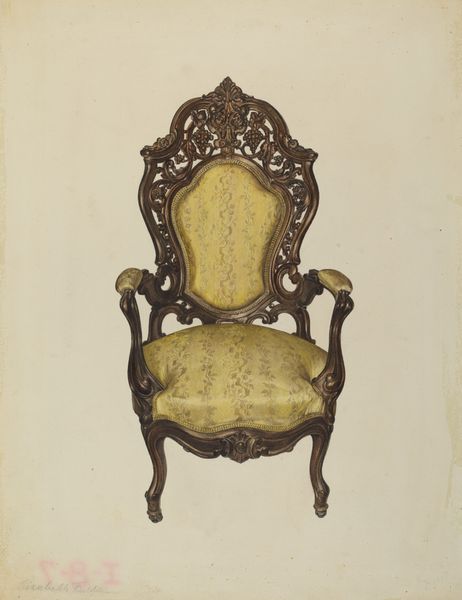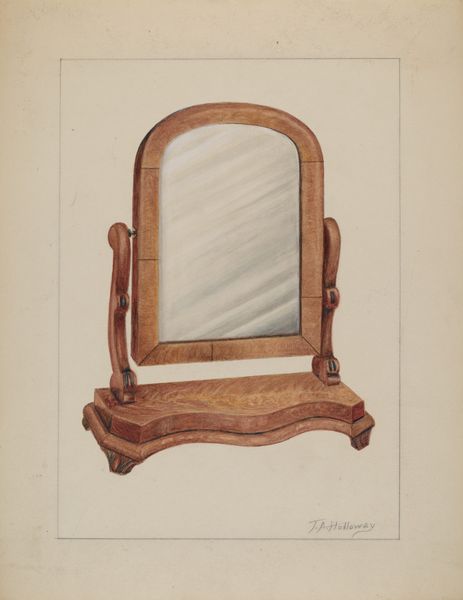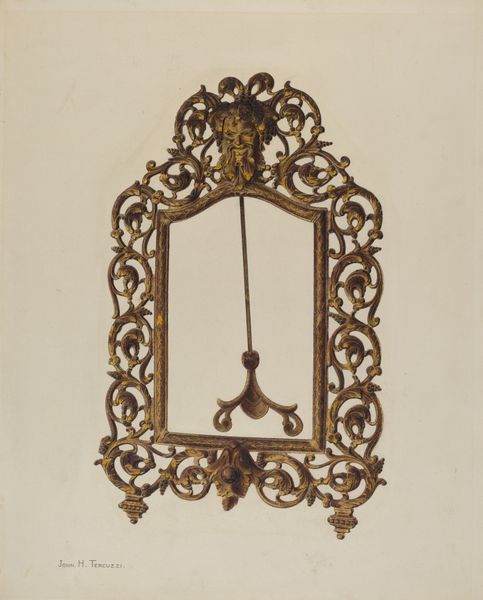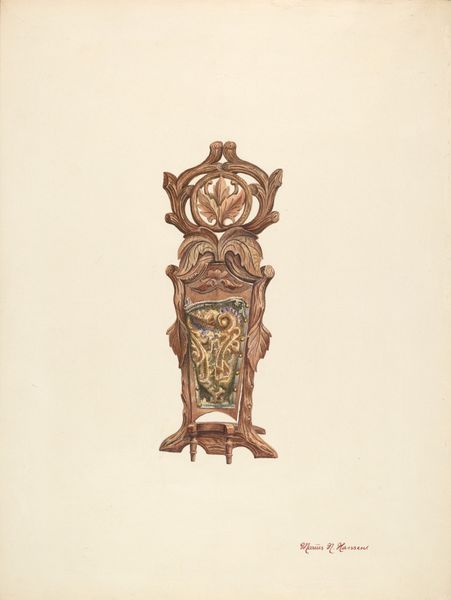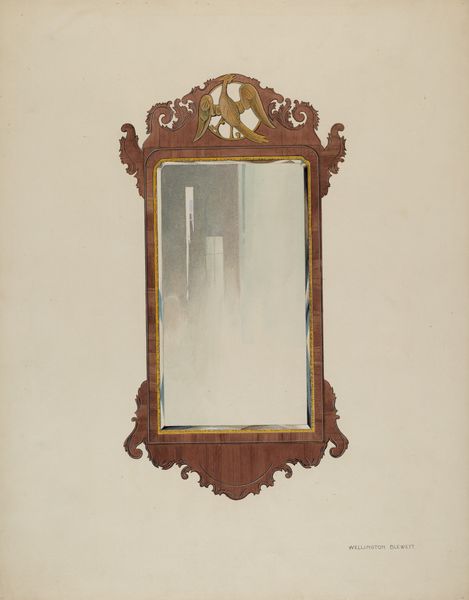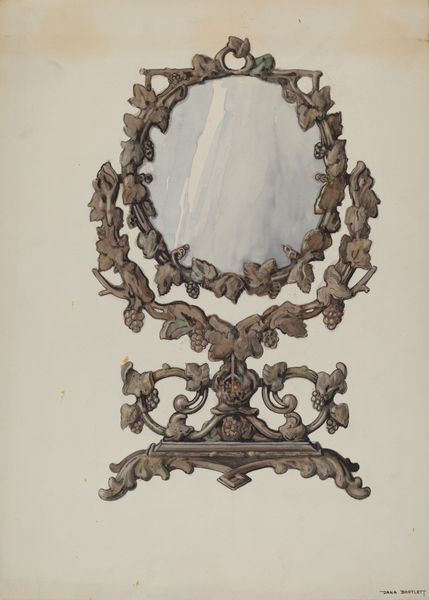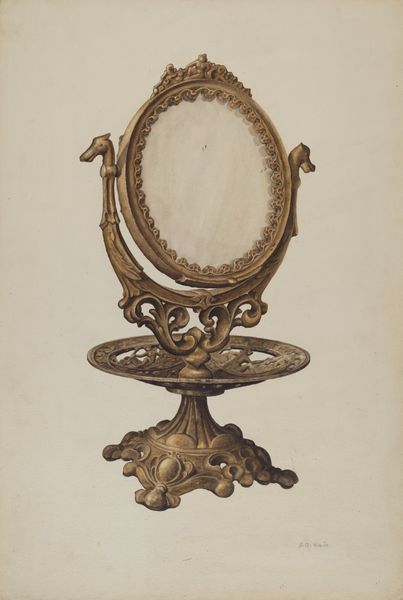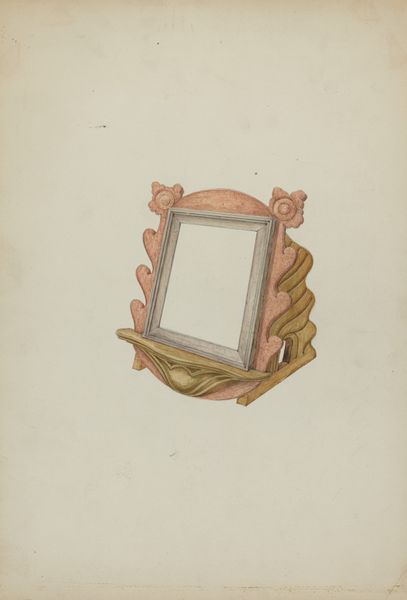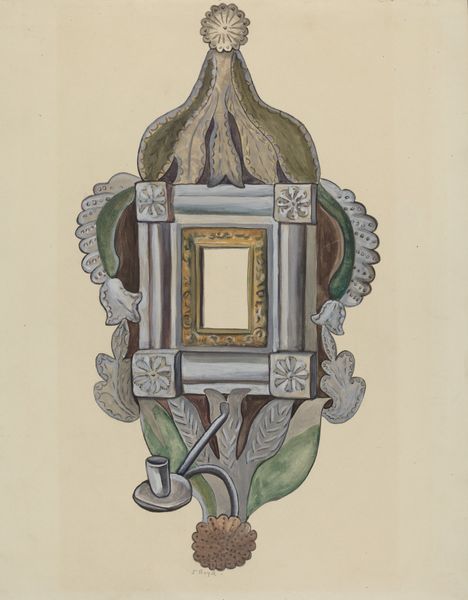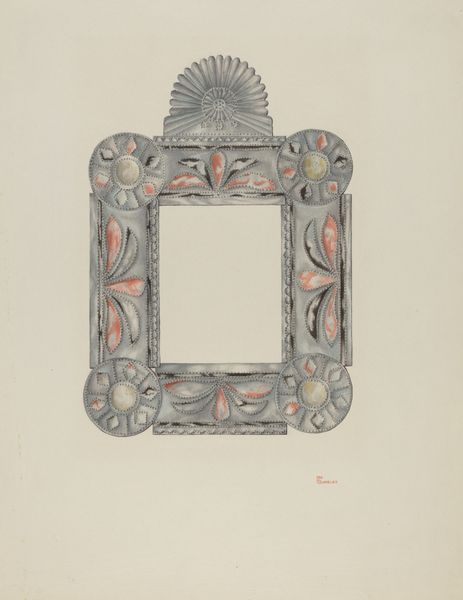
drawing, coloured-pencil
#
drawing
#
coloured-pencil
#
coloured pencil
#
decorative-art
#
watercolor
#
realism
Dimensions: overall: 35.4 x 24.3 cm (13 15/16 x 9 9/16 in.) Original IAD Object: 1/2 scale
Copyright: National Gallery of Art: CC0 1.0
Curator: I’d like to introduce Gerald Transpota's “Stand for Missal,” created around 1939 using colored pencils. It has a delicate rendering. Editor: My first impression is that it feels quite grand despite being a drawing. The ornamentation has a rich texture; a tactile quality. Curator: Indeed. Consider how the sunburst motif at the top functions formally; it adds height and focuses attention, while the floral details soften the overall severity. There is an intricate relationship between the curves and angles within the object. Editor: It’s fascinating how the piece operates within its historical context. Missals were pivotal in Catholic worship. Transpota capturing a piece, traditionally displayed to present readings to the masses, in accessible medium and form is significant. Was he attempting to democratize religious symbols through art? Curator: Potentially. One could also analyze the shelf element structurally. Its horizontal plane offers stability. This base against the implied emptiness creates balance to offset the upper decorative aspects. Editor: And that decorative excess, so prevalent during the baroque era… It evokes an air of established religion, institutions, and perhaps reflects on Transpota's socio-political views toward religious iconography during his time. This period, nearing the second World War, saw vast social change and spiritual questioning. Curator: A wonderful consideration of socio-cultural meanings and the emotional impact is inevitable with that visual rhetoric! Yet, returning to a purely visual dimension—notice the color consistency within the medium itself, despite rendering the textures convincingly to give off the look and feel of woodworking. Editor: True, that commitment to rendering helps blur lines—pushing us to look beyond representation and grapple with our cultural understanding of symbolism within a quickly transforming world. It's almost as if the missal stand becomes an altar of art in itself. Curator: Precisely. That intricate interweaving of elements is how the aesthetic dimensions and intellectual inquiries become realized, rendering a historical moment both permanent and accessible in equal measure. Editor: I agree. Reflecting on this artwork through both structural detail and historical context enhances how we regard not just religious iconography but society and culture throughout the period.
Comments
No comments
Be the first to comment and join the conversation on the ultimate creative platform.

